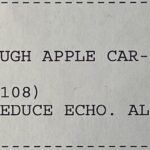When the Mazda CX-50 was introduced, many speculated about its role within Mazda’s lineup. Would it replace the popular CX-5, or would both models coexist? Historically, Mazda has employed both strategies, either directly replacing older models or offering them as budget alternatives. With the CX-50’s arrival, it appears Mazda is opting for the latter, positioning the CX-50 as the newer, slightly more premium option, while the CX-5 continues as a value-oriented choice in the compact SUV segment. This comparison dives into the key differences between the CX-5 and CX-50 to help you determine which Mazda SUV best fits your needs.
CX-5 vs. CX-50: Size Comparison
Both the Mazda CX-5 and CX-50 compete within the crowded compact SUV class. However, the CX-5 leans towards the more compact end of the spectrum. At 180 inches in length, it’s notably shorter than rivals like the Honda CR-V and Volkswagen Tiguan. While this difference might seem minor, it translates to less passenger room, particularly in the rear seats. Taller passengers may find the CX-5’s back row somewhat cramped compared to the more spacious Honda and VW.
Recognizing the demand for increased space, Mazda designed the CX-50 to be more accommodating. The CX-50 measures 6 inches longer than the CX-5. This increase in size not only provides more passenger room but also expands the cargo area. While the CR-V and Tiguan still offer more generous space in both areas, the CX-50 represents a significant step up from the CX-5 in terms of overall roominess and comfort. For those prioritizing passenger and cargo space, the CX-50 presents a more comfortable and practical option.
CX-5 vs. CX-50: Performance and Engine Options
In terms of performance, the Mazda CX-50 largely mirrors the CX-5, sharing the same powertrain options. Both models come standard with a 2.5-liter four-cylinder engine producing 187 horsepower and 185 lb-ft of torque. For drivers seeking more spirited performance, a turbocharged version of this engine is available, delivering 227 hp and 310 lb-ft of torque on regular gasoline, or an even more robust 256 hp and 320 lb-ft on premium 93 octane fuel. Equipped with the turbocharged engine, both the CX-5 and CX-50 rank among the quicker non-luxury compact SUVs available, offering engaging driving dynamics.
However, the CX-50 distinguishes itself with an upcoming powertrain option. Starting with the 2025 model year, the CX-50 will introduce a Toyota-sourced hybrid powertrain. This system combines a 2.5-liter four-cylinder engine with three electric motors, resulting in a combined output of 219 horsepower and 163 lb-ft of torque. The CX-50 Hybrid is projected to achieve 38 mpg in combined EPA testing cycles, significantly outperforming both the standard 2.5-liter engine (28 mpg combined) and the turbocharged engine (25 mpg combined). This hybrid option, not available for the CX-5, positions the CX-50 as the more fuel-efficient choice, especially for environmentally conscious buyers or those seeking to reduce fuel costs.
